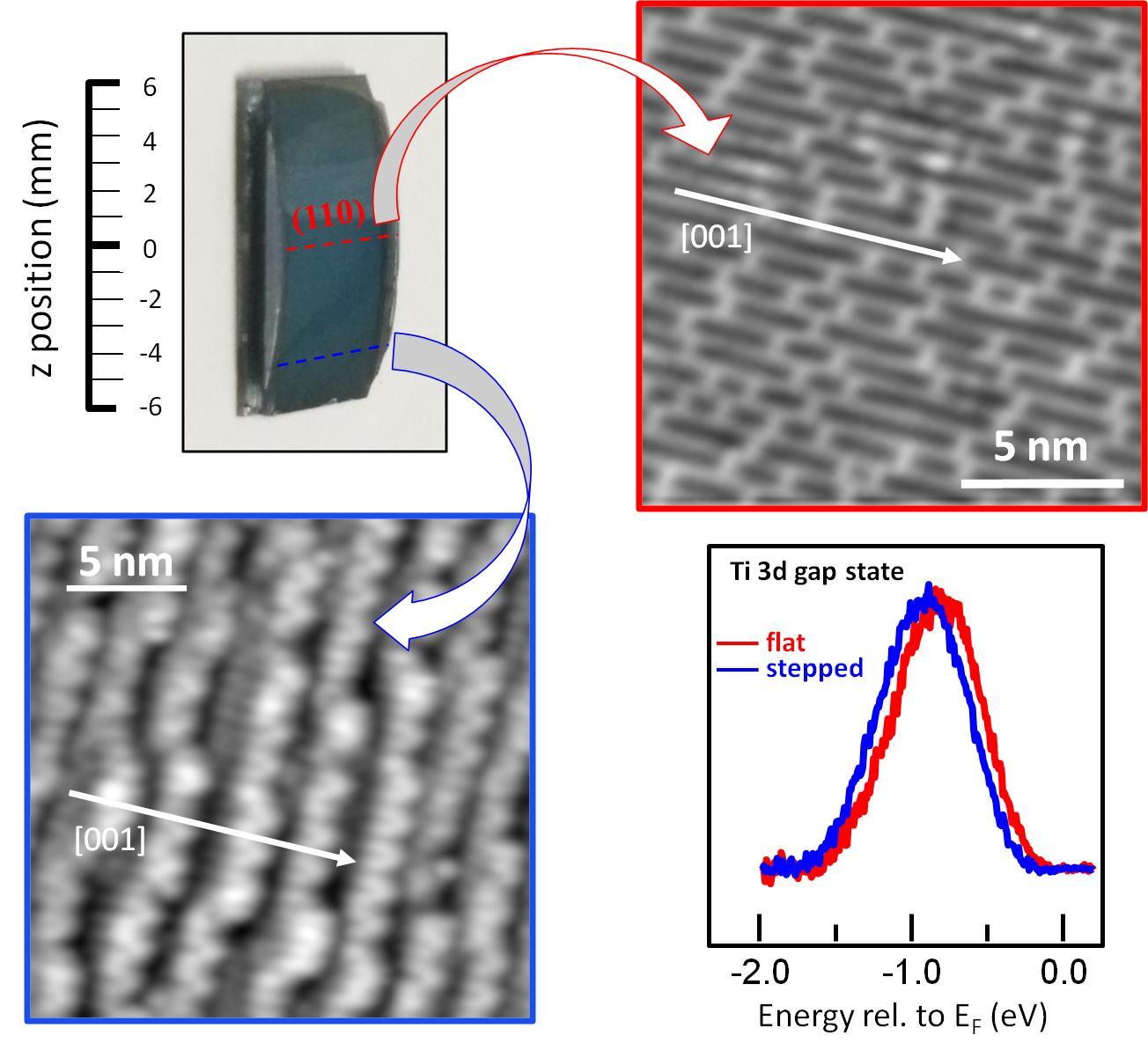Interplay between Steps and Oxygen Vacancies on Curved TiO2(110)
Rutile is the most stable polymorph of titanium dioxide (r-TiO2), being a prototypical, reducible metal oxide. It is applied in many fields ranging from catalysis to memristors. These applications are often enabled by lattice defects, which act as electron donors and convert the otherwise insulating system into an n-type semiconductor. The nature of these defects, as well as their influence on the electronic and chemical behavior of r-TiO2, has attracted considerable interest. Of particular importance are oxygen vacancies, which donate electrons to the material. Excess electrons in rutile tend to localize at surface and subsurface Ti atoms, forming a Ti3+ oxidation state. The localized electron is accompanied by lattice distortions, leading to the so-called polaron of r-TiO2.
Step edges are sites with low atomic coordination and thus chemically and electronically active. Only a few studies on vicinal rutile planes exist, but they reveal the potential of stepped surfaces to further tailor the physical and chemical properties of r-TiO2. However, a systematic study of different vicinal planes exploring their structural stability, the step edge termination, the contributions of steps to electron-doping, or the possible alteration of the Ti3+ polaron in the vicinity of steps, is missing. In this work we demonstrate that a thorough exploration of structural and electronic properties of stepped r-TiO2(110) surfaces can be conveniently performed using curved crystals.
In the figure bellow (a) the photography of the curved TiO2(110) sample (c-TiO2(110)), which allowed the systematic study of stepped r-TiO2(110) surfaces with tunable density of [1-10]-oriented steps is shown. Using Scanning Tunneling Microscopy we analyzed the structure and distribution of steps and vacancies as a function of the average deviation (miscut α) from the (110) surface. A smooth evolution from wide terraces, containing oxygen bridge vacancies is observed [Obr vac´s, Figure (b)], toward narrow (110) terraces, depleted of Obr vac´s, but exhibiting a high density of triangularly-shaped protrusions at steps (St) [Figure (c)]. By scanning the photoemission beam in angle resolved photoemission spectroscopy across the sample, we studied the signature of the Ti3+ polaron, namely the so-called Ti3+ gap state [Figure (d)]. The gap state reflects a transition from Obr to step-edge-doping across the curved surface through a 110 meV shift in apparent binding energy, indicating a different polaronic relaxation for flat or stepped surfaces. Interestingly, the intensity of the gap state correlates with the sum of Obr vac´s at terraces and St step-protrusions, suggesting that every St site hides one oxygen vacancy that equally contributes to sample doping in r-TiO2(110).

Figure (a) Curved TiO2(110) sample. The (110) plane is located at the center of the curved crystal, and the step density smoothly increases towards both sides. Marked are the positions at which the Scanning Tunneling Microscopy images (b)-(c) were obtained. (b) (110) terrace with Obr vac´s appearing as bright, features bridging bright Ti rows along the (001) direction. (c) Narrow Obr vac´s-free terraces, regularly separated by [1-10]-oriented steps. The latter feature triangularly-shaped St protrusions (bright features). (d) Gap state peak measured from flat [panel (b), red line] and stepped [panel (c), blue line] areas of the curved crystal, using Angle Resolved Photoemission. The intensity is exactly the same, meaning that each St site hides one oxygen vacancy that dopes the stepped TiO2(110) surface.



